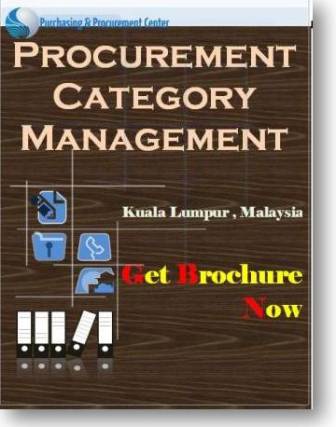Managing Indirect Procurement Categories!

The Key Differences
Between Direct and Indirect Procurement!
Direct procurement is concerned with the acquisition of goods and services that are directly used in the production process.
This includes components, raw materials, and any other inputs that are essential for manufacturing a final product.
In contrast, indirect procurement focuses on the acquisition of goods and services that are not directly involved in the production but are necessary for day-to-day operations.
While direct procurement is characterized by greater scrutiny and attention due to its direct impact on the final product, indirect procurement plays a critical role in sustaining the overall business operations.
Recognizing the differences between direct and indirect procurement is essential for organizations to allocate resources effectively and optimize their procurement strategies.
It is important to note that indirect procurement can account for a significant portion of a company's overall spending. This is paramount if you are only managing indirect categories - a fact that top management needs to be reminded often.
In conclusion, while direct procurement focuses on the core production process, indirect procurement plays a vital role in supporting day-to-day operations.
By better managing indirect procurement, you can optimize their spending, streamline processes, and achieve better financial outcomes.
Managing the 3 Types of Indirect Procurement Categories!
Indirect procurement encompasses various categories, each
having a distinct impact on business operations. By understanding these
categories, organizations can tailor their procurement strategies accordingly
and achieve better cost management.
Let's dive deeper into some of the common types of indirect procurement categories:
1. Managing Office Supplies and Equipment
In today's modern office environment, office supplies and
equipment, such as stationery, furniture, and technology devices, are essential
for daily operations. Effectively managing this category can significantly
impact cost savings and operational efficiency.
- Factors to Consider in Office Supplies & Equipment
When it comes to office supplies, organizations need to consider factors such as quality, price, and supplier reliability.
By carefully selecting suppliers and negotiating favorable contracts, businesses can ensure a steady supply of high-quality office supplies at competitive prices.
Additionally, implementing efficient inventory management systems can help prevent stockouts and minimize excess inventory, leading to cost savings.
You can explore innovative solutions to optimize office equipment usage. For instance, implementing shared workspaces and utilizing cloud-based document management systems can reduce the need for physical office equipment, resulting in cost savings and a more sustainable work environment.
2. Managing Professional Services
Professional services cover a broad range of activities,
including legal, consulting, marketing, and IT services. Efficient management
of professional services procurement can help organizations achieve better
value for money, enhance project outcomes, and drive business growth.
- Factors to Consider in Professional Services
When procuring professional services, organizations need to carefully evaluate service providers based on ...
- Expertise,
- Track record, and
- Cost-effectiveness.
Conducting thorough due diligence and requesting proposals from multiple vendors can help ensure that the chosen service provider aligns with the organization's goals and requirements.
Do explore alternative service delivery models, such as outsourcing or engaging freelancers, to optimize cost and flexibility.
By leveraging technology platforms that connect businesses with qualified professionals, you can tap into a global talent pool and access specialized expertise when needed.
3. Managing Maintenance, Repair, and Operations (MRO)
Maintenance, repair, and operations (MRO) procurement
includes all goods and services required to maintain and operate a company's
physical assets, including machinery, vehicles, and facilities.
Streamlining MRO procurement can lead to reduced downtime, increased asset lifespan, and improved overall operational efficiency.
- Factors to Consider in Managing MRO
Effective MRO procurement involves developing strategic partnerships with reliable suppliers who can provide high-quality products and services at competitive prices.
By establishing long-term relationships with suppliers, you can negotiate favorable contracts, access volume discounts, and ensure timely delivery of MRO items.
Moreover, implementing preventive maintenance programs and utilizing technology-driven asset management systems can help to proactively identify maintenance needs, schedule repairs, and optimize asset performance.
This proactive approach can minimize unplanned downtime, extend the lifespan of assets, and reduce overall maintenance costs.
Recognizing the Role of Suppliers in Managing Indirect Procurement Categories!
When dealing with indirect
procurement categories, collaborating closely with suppliers helps you gain
insights into market dynamics, industry trends, and potential areas for cost
optimization.
For example, you may have a long-standing relationship with a supplier of office furniture. By engaging in regular discussions and sharing information, the company can stay updated on the latest trends in office furniture design and technology.
This knowledge can help to identify opportunities to upgrade the furniture to more ergonomic and efficient options, ultimately improving employee productivity and well-being.
Building strong supplier relationships facilitates improved service levels and access to innovative solutions that enhance operational efficiency.
By recognizing the role of suppliers, you can tap into their expertise and collaborate on initiatives that drive value and cost savings.
3 Challenges to Managing Indirect Procurement Categories!
While managing indirect procurement categories has several benefits, there are challenges that hinder effective procurement strategies. By understanding these challenges, businesses can develop proactive measures to overcome them and optimize their procurement processes.
- Lack of Visibility and Control
One of the most significant challenges in managing indirect procurement categories is a lack of visibility and control. Many organizations struggle to gain comprehensive insights into their indirect procurement activities, leading to inefficiencies and missed cost-saving opportunities.
Implementing procurement analytics tools and establishing robust monitoring processes can mitigate this challenge and foster better decision-making.
- Complex Supplier Relationships
Another challenge in managing indirect procurement categories is the complexity of supplier relationships. Multiple suppliers often play a role in delivering indirect goods and services, requiring organizations to effectively manage and negotiate contracts, balance quality and cost considerations, and ensure compliance.
By establishing clear communication channels and fostering supplier collaboration, businesses can navigate the complexities and optimize their supplier relationships.
- Inefficient Processes and Systems
Inefficient processes and systems can hinder effective indirect procurement strategies. Manual and fragmented procurement processes can lead to errors, delays, and increased costs.
Investing in digital procurement platforms, streamlining workflows, and automating repetitive tasks can enhance operational efficiency, reduce cycle times, and improve overall procurement performance.
In conclusion, managing effectively indirect procurement categories is a crucial step in optimizing procurement strategies, driving cost savings, and improving overall business efficiency and foster stronger supplier relationships.
Exit Managing Indirect Categories and Discover more about Category Management Here!
Implement Category Management in Your Organisation with our Procurement Category Management Training!
Led by a Former Strategic Sourcing Director of Bank of America, this training is filled with real-life case studies, exercises and ready-to-use checklists and templates.
Fill in the Form Below To Get the Official Training Program Brochure !

